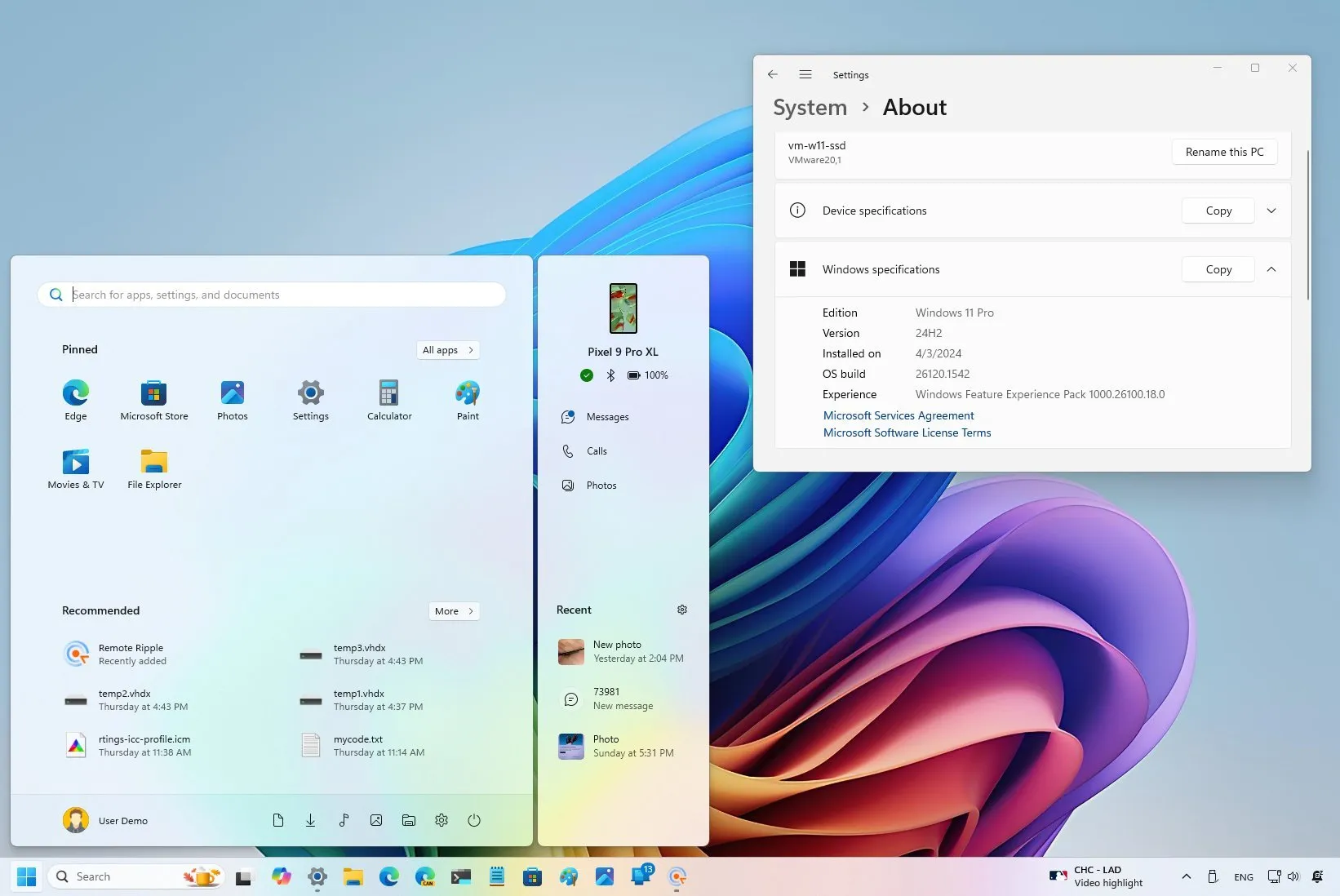Should I install Windows 11 24H2 on my PC? No, and here’s why.

- No, you shouldn’t upgrade to Windows 11 24H2 even though it’s officially available.
- You should wait for at least three cumulative updates to install a more reliable build.
- The reason is that problems and errors are expected to happen during the early days.
- Also, it’ll take time for everyone to receive all the features since Microsoft always rolls out features gradually.
UPDATED 10/4/2024: Microsoft pushed the release button of Windows 11 24H2 (2024 Update) on October 1, 2024, but this rollout has been a little confusing since the company made the feature update available in two parts. If you’re wondering whether you should install the new version on your computer, the short answer is “no,” the reason is that during the early days, you are likely to encounter issues.
Microsoft made available version 24H2 on June 18, but this release is only for the new Copilot+ PCs featuring Qualcomm’s new ARM processor because these new devices depend on many of the new components available in the latest release of the operating system. However, the feature update wasn’t available for existing devices featuring Intel or AMD’s x86 processors, but starting on October 1, 2024, it’s available for compatible devices already running versions 23H2 and 22H2.
Should you upgrade to Windows 11 24H2?
The best and short answer is “No.” You should not upgrade to Windows 11 24H2. I’ve noticed that some online media outlets are recommending the upgrade, but this is based purely on the changes the new version brings. However, the reality is that problems are expected in the early days. Microsoft is aware of this, and that’s the reason for the gradual rollout approach.
Also, even if your computer is fully compatible, you won’t likely receive all the new features as they are being turned on slowly using the Control Feature Rollout technology to enable the new experiences only when they are ready for the device. Once the new features have been validated, the company will enable them by default.
If your computer still hasn’t received the feature update, you shouldn’t force the installation since it could indicate that it’s not fully compatible with your computer.
For example, at the time of this update, Windows 11 24H2 has a number of known issues, some of which are causing Blue Screen of Death errors for a small number of users. Also, some apps have compatibility problems, and I’ve been receiving complaints from other programs with compatibility issues.
For this reason, the company checks and offers the new version only to devices known to have a good upgrade experience. As the feature update proves more stable, the rollout will then expand to other computers based on hardware eligibility, reliability metrics, and many other factors.
Also, remember that version 24H2 has new hardware requirements that may limit the number of features you will be able to access. For instance, this feature update focuses on new AI innovations that require additional hardware (such as an NPU (Neural Processing Unit)), and some of the biggest features are exclusive to Copilot+ PCs.
If you have a computer with unsupported hardware, upgrading to Windows 11 24H2 is not recommended. However, there are ways to upgrade an unsupported computer. If you install version 24H2, the device will be in an unsupported state, and it’ll likely experience more crashes, support won’t be available, and updates won’t be guaranteed to work as expected.
Should I wait to install Windows 11 24H2?
Yes, you should always wait at the beginning. It is never a good idea to jump quickly into a new release since unknown bugs, errors, and compatibility issues are expected during the early days.
After version 24H2 becomes available, your device will (eventually) receive a notification through the Windows Update settings to upgrade manually. If you don’t receive the message, forcing the Windows 11 24H2 upgrade is not recommended because you will likely run into issues. If you want to proceed with the upgrade, check my guide on the ten things you can do to avoid issues making the leap to the 2024 Update.
Typically, it’s recommended to wait until Windows 11 24H2 is fully available to install a more stable build, which happens sometime after the feature update has been officially released.
You shouldn’t rush to upgrade if your computer has an older Windows release without issues. You should wait a little longer. However, you should not skip the update entirely. Eventually, that specific version will be discontinued and will no longer receive maintenance updates, leading to other issues and making it vulnerable.
If you’re still on version 21H2 or 22H2, Microsoft is in the process of upgrading these devices automatically to keep them supported. If you can wait to upgrade to version 24H2, you should. If you have a computer running Windows 10 22H2, you can continue using the operating system until October 15, 2025, which is when this version of Windows will reach the end of service. However, it’s possible to upgrade direction from Windows 10 to Windows 11 24H2.
Update October 4, 2024: This page has been updated to ensure accuracy and include the latest information.
Source link


